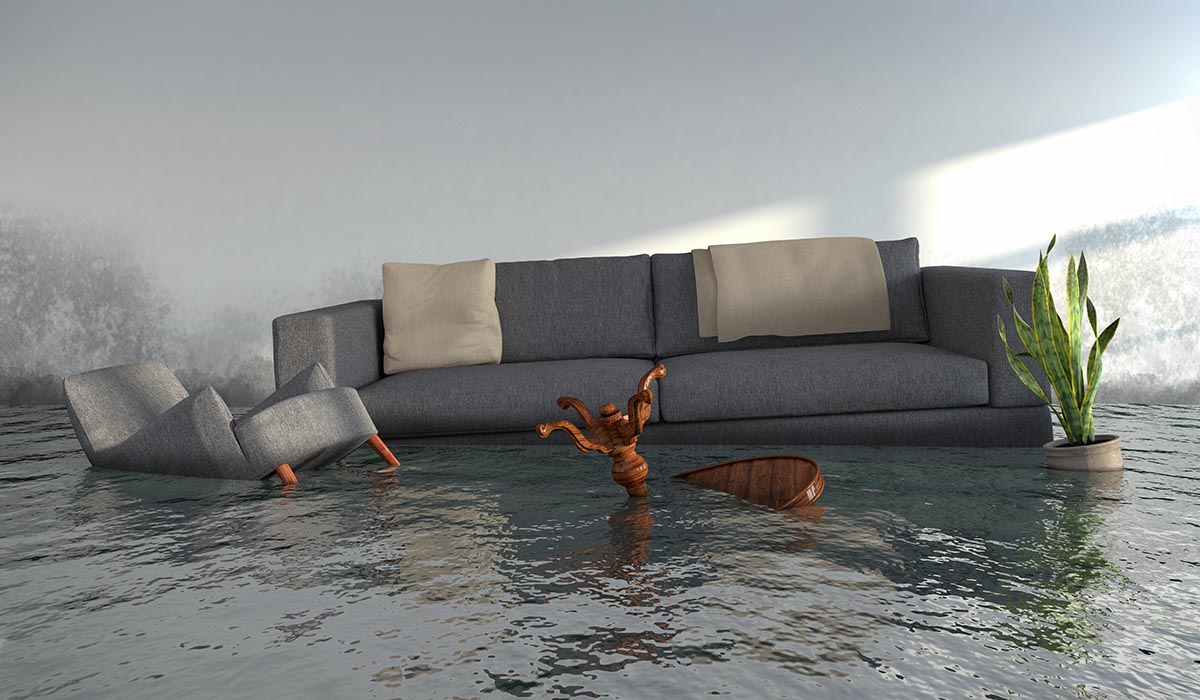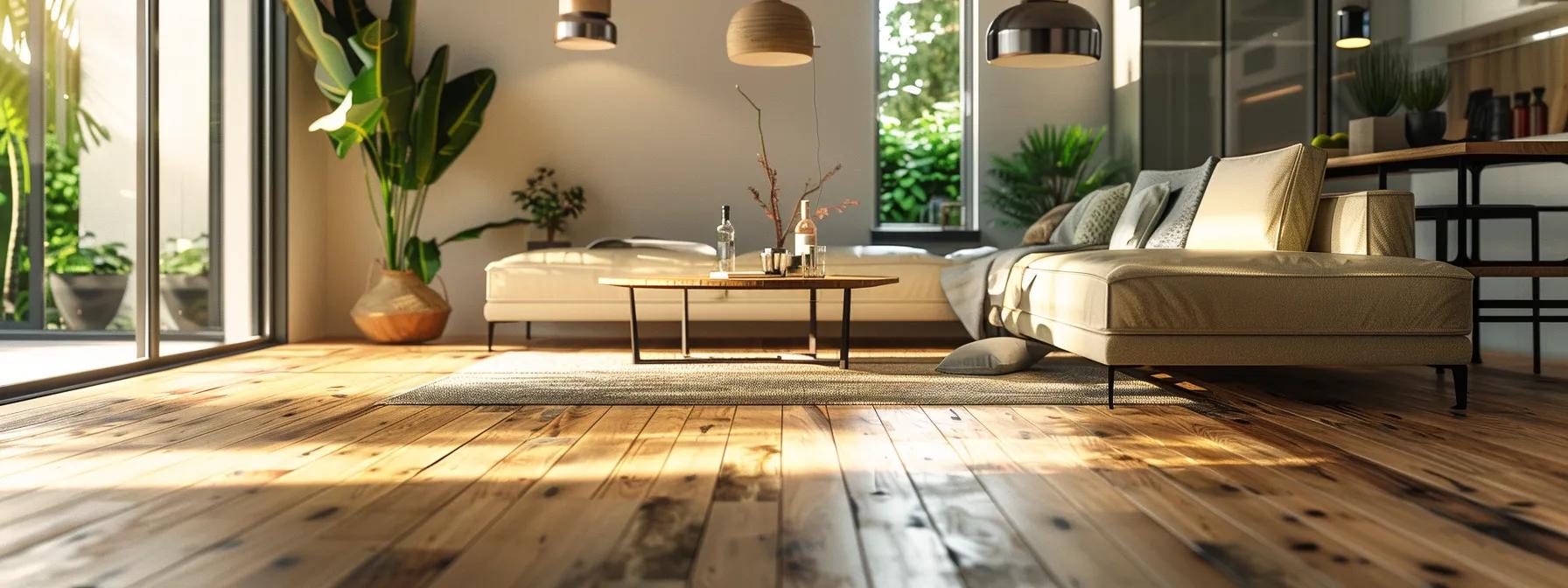Comparing Installation Costs: Hardwood vs. Laminate and Vinyl Flooring Explained for Homeowners
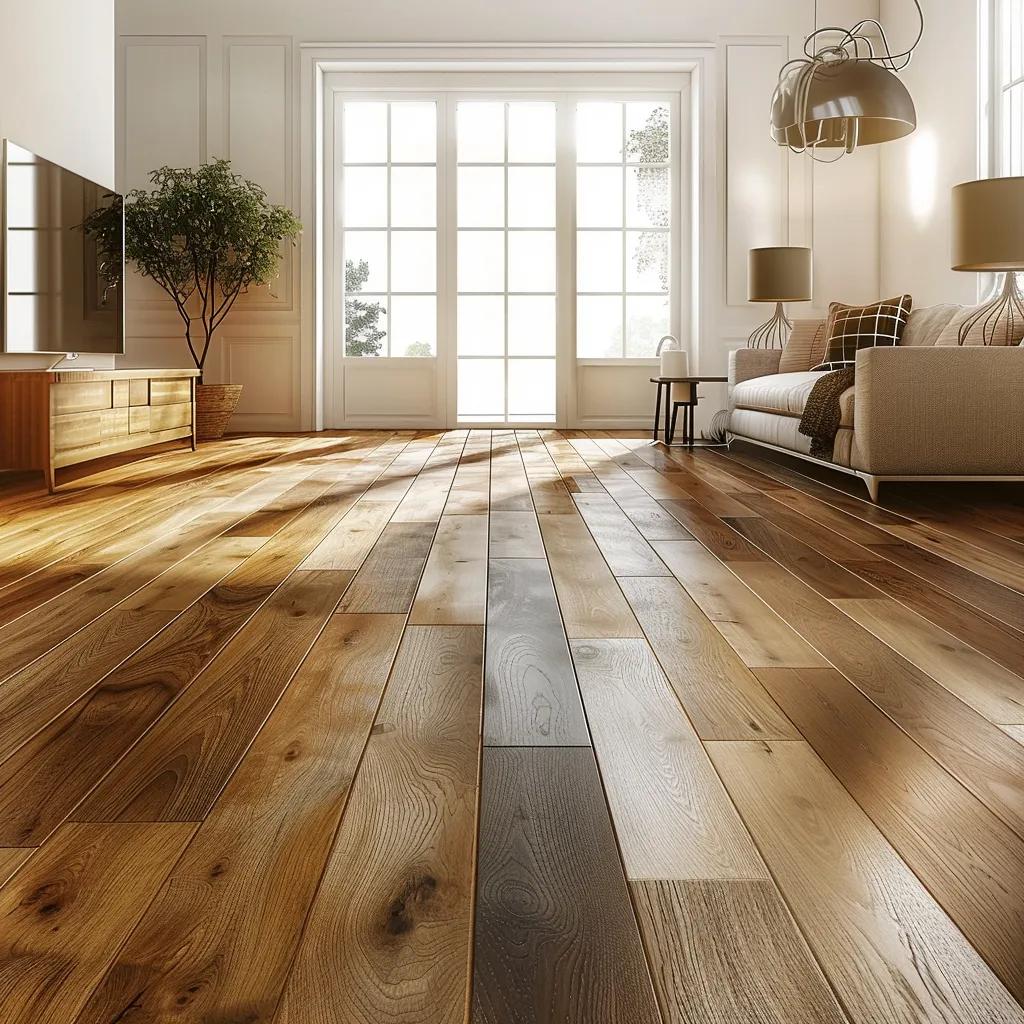
Renovating floors can transform a home’s look and value, yet the installation cost differences between hardwood, laminate, and vinyl often confuse homeowners. Whether planning a new floor installation or sanding and refinishing existing hardwood, understanding material expenses, labor rates, durability, and local factors in Marietta ensures a confident decision. This guide covers:
- Average per-square-foot installation costs
- Durability and maintenance comparisons
- Pros and cons of each flooring type
- Key cost drivers and local influences
- DIY vs. professional installation analysis
- Hardwood refinishing vs. replacement expense
- Budget-and-lifestyle decision framework
- Common homeowner concerns about flooring cost
By mapping costs, performance, and practical considerations, homeowners gain clarity on the best flooring investment for their lifestyle and budget.
Table of Contents
What Are the Average Installation Costs for Hardwood, Laminate, and Vinyl Flooring?
Average installation costs combine material and labor expenses per square foot to provide a clear budget benchmark. This metric helps compare flooring types side by side before refining choices based on style, durability, and location.
| Flooring Type | Material Cost (per sq ft) | Labor Cost (per sq ft) |
|---|---|---|
| Hardwood Flooring | $3–$10 | $3–$8 |
| Laminate Flooring | $1–$4 | $1–$8 |
| Luxury Vinyl Plank | $2–$5 | $1–$7 |
| Vinyl Sheet | $1–$3 | $1–$5 |
Average Flooring Installation Costs
The cost of flooring installation varies significantly based on the material chosen. Hardwood flooring generally has the highest initial cost, while laminate and vinyl offer more budget-friendly options. These costs include both material and labor expenses, which can fluctuate based on geographic location and specific project requirements.
This source provides general cost comparisons for different flooring types, which supports the article’s initial cost breakdown.
How Much Does Hardwood Flooring Installation Cost per Square Foot?
Hardwood flooring installation typically costs between $6 and $18 per square foot, combining material ($3–$10) and labor ($3–$8).
Material breakdown by species:
- Oak: $4–$8 per sq ft for prime-grade planks
- Maple: $3–$7 per sq ft for mid-grade boards
- Hickory: $5–$10 per sq ft for premium durability
Labor factors include subfloor prep, nail-down or glue-down methods, and finishing coats. Skilled installers from BK Flooring Services Inc. Marietta ensure seamless plank alignment, boosting floor longevity and aesthetic appeal.
What Is the Typical Cost Range for Laminate Flooring Installation?
Laminate flooring installation averages $2 to $12 per square foot, with materials at $1–$4 and labor at $1–$8.
Key considerations:
- AC Rating: AC3 ($1–$2) vs. AC5 ($3–$4) for commercial durability
- Installation Style: Click-lock floating floors reduce labor time, while glue-down options add $1–$2 per sq ft
Laminate provides an affordable entry point, enhancing wear resistance for active homes without extensive subfloor work.
How Does Vinyl Flooring Installation Cost Compare to Hardwood and Laminate?
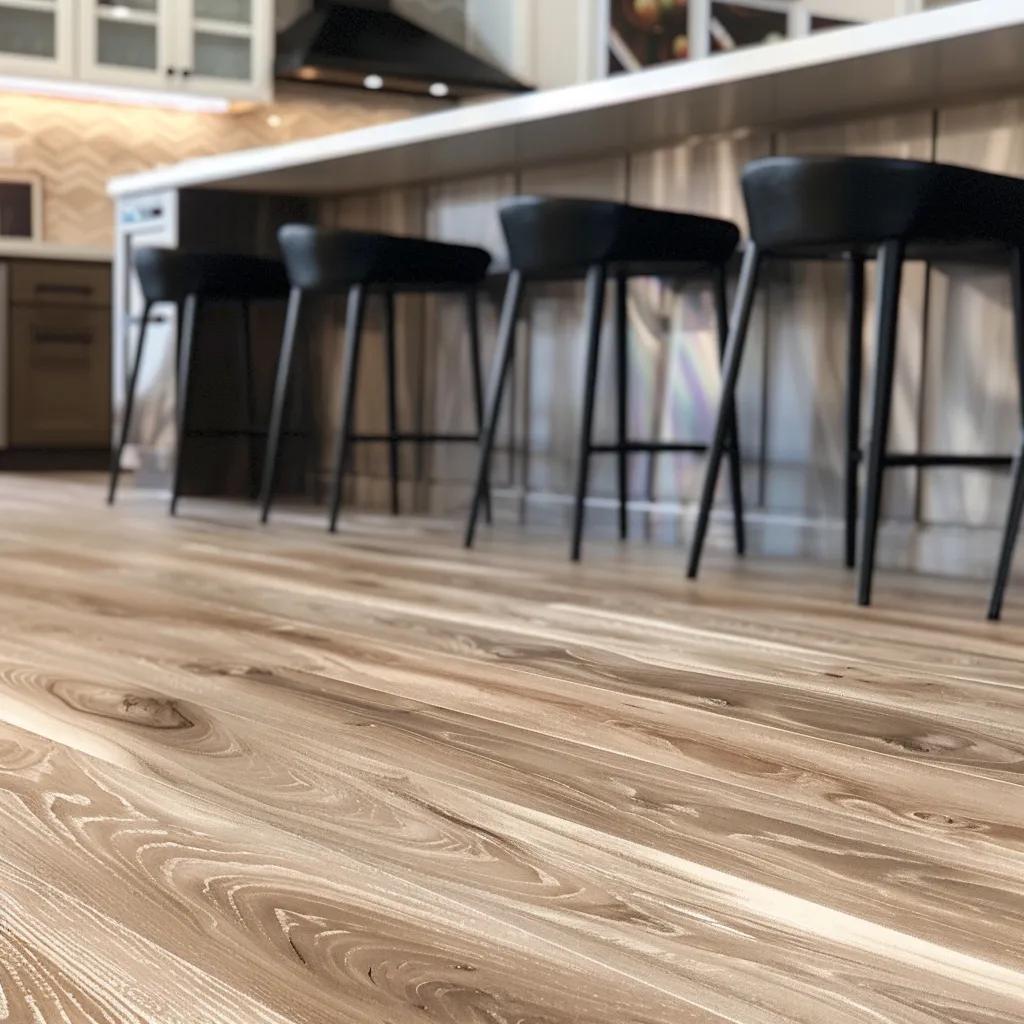
Vinyl flooring costs vary by format, averaging $3 to $12 per square foot in total.
Below is a format-specific cost list:
- Luxury Vinyl Plank (LVP): $2–$5 material + $1–$7 labor
- Luxury Vinyl Tile (LVT): $2–$6 material + $1–$7 labor
- Sheet Vinyl: $1–$3 material + $1–$5 labor
Vinyl options combine realistic wood or tile visuals with waterproof performance, making them cost-effective for kitchens and bathrooms.
What Local Factors Affect Flooring Installation Costs in Marietta?
Local influences can shift published averages by up to 20%:
- Geographic Labor Rates – Urban vs. suburban crew fees
- Subfloor Conditions – Repair or leveling adds $0.50–$2 per sq ft
- Disposal Fees – Old flooring removal incurs $200–$500 total
- Permit and HOA Requirements – Add administrative time and costs
Evaluating these Marietta-specific factors early prevents budget overruns and project delays.
How Do Hardwood, Laminate, and Vinyl Flooring Differ in Durability and Maintenance?
Durability and upkeep directly influence long-term value. Flooring that resists wear, water, and heavy traffic reduces repair and replacement expenses over decades.
What Is the Durability of Solid Hardwood vs. Engineered Hardwood?
Durability and Lifespan of Flooring Materials
The lifespan of flooring materials varies greatly, with solid hardwood offering the longest durability, potentially lasting up to 100 years with proper care. Engineered hardwood, laminate, and vinyl have shorter lifespans, influencing long-term replacement costs and overall value. The choice of material significantly impacts the frequency of replacement and maintenance needs.
This citation supports the article’s claims about the durability and lifespan of different flooring materials, specifically hardwood and engineered wood.
| Product | Lifespan | Cost Implication |
|---|---|---|
| Solid Hardwood | 50–100 years | Higher initial cost, low long-term replacement |
| Engineered Hardwood | 20–30 years | Moderate cost, stable moisture performance |
Solid planks can be refinished multiple times, enhancing return on investment. Engineered boards resist humidity better, reducing subfloor-prep costs.
How Scratch-Resistant and Water-Resistant Is Laminate Flooring?
Laminate features a protective melamine layer rated AC1–AC5 for scratch and abrasion resistance. AC4 and AC5 grades perform well in busy hallways and retail-like conditions.
- Water resistance: Basic laminate is water-resistant but not waterproof, requiring prompt spill cleanup.
- Edge seal technology: Premium lines limit moisture penetration for light kitchen use.
Scratch resistance and ease of cleaning keep maintenance low, though damaged planks require replacement rather than refinishing.
Why Is Vinyl Flooring Considered Highly Durable and Waterproof?
Vinyl flooring’s multi-layer construction yields high durability and full waterproof protection:
- Wear layer (8–20 mil) shields against scratches and stains
- Waterproof core materials (WPC, SPC) resist moisture and dents
- Seamless sheet installations eliminate grout-line leakage
Vinyl’s waterproof nature and easy-wipe surface minimize maintenance costs and downtime in bathrooms and basements.
How Does Maintenance Cost Vary Among These Flooring Types?
Regular care expenses differ by material:
- Hardwood: $0.10–$0.30 per sq ft annual cleaning; refinishing every 7–15 years (~$2–$4 per sq ft)
- Laminate: $0.05–$0.20 per sq ft annual cleaning; plank replacement at $10–$20 per plank
- Vinyl: $0.05–$0.15 per sq ft annual cleaning; sheet repairs ($100–$300) for large tears
Hardwood refinishing investment often reduces total lifecycle cost when compared to full replacement of laminate or vinyl.
What Are the Pros and Cons of Hardwood, Laminate, and Vinyl Flooring Installation?
Homeowners weigh aesthetics, budget, and complexity when selecting flooring. Understanding trade-offs improves long-term satisfaction.
What Are the Advantages and Disadvantages of Hardwood Flooring Installation?
Hardwood offers unbeatable warmth, resale value, and refinishing potential but demands higher upfront cost and moisture-sensitive installation.
Benefits:
- Timeless elegance and customization
- Renewable surface through sanding and refinishing
- Long lifespan
Drawbacks:
- Susceptible to water damage without proper sealing
- Installation complexity raises labor rates
- Requires acclimation period and controlled humidity
What Should Homeowners Know About Laminate Flooring Installation Benefits and Drawbacks?
Laminate provides cost-effective wood looks, simple installation, and scratch resistance, but cannot be refinished and can swell if saturated.
Benefits:
- Budget-friendly material and DIY-friendly click-lock
- Durable AC4+ options for heavy foot traffic
- Low maintenance
Drawbacks:
- Limited water resistance compared to vinyl
- Damaged planks must be replaced
- Appearance less authentic than real wood
How Does Vinyl Flooring Installation Compare in Terms of Benefits and Limitations?
Vinyl excels in waterproof durability and design versatility yet may feel less solid underfoot and can emit low-level VOCs if not fully certified.
Benefits:
- Fully waterproof and stain-resistant
- Soft underfoot with cushioned backing options
- Extensive color and pattern choices
Drawbacks:
- Potential for surface gouges under heavy furniture
- Substrate prep critical to avoid telegraphing imperfections
- Premium luxury vinyl cost approaches engineered hardwood
What Factors Influence the Total Cost of Flooring Installation?
Several drivers determine the final invoice beyond basic per-square-foot rates. Addressing these factors during planning prevents cost surprises.
How Does Room Size and Layout Affect Installation Pricing?
Large, open rooms generally lower unit costs through efficient workflow, while small or irregular layouts increase labor by 10–25%.
Complex cuts around cabinets, fireplaces, and staircases add prep time and waste more material.
Why Is Subfloor Preparation Important and How Does It Impact Cost?
A level, stable subfloor prevents plank movement and premature wear.
Repairs or leveling compounds range from $0.50 to $2 per sq ft.
Ignoring subfloor needs can lead to costly callbacks and warranty voids.
What Are the Additional Costs for Old Flooring Removal and Disposal?
Removing and hauling away old floors adds $1–$3 per sq ft and $200–$500 in disposal fees.
Furniture moving and protective measures often incur $50–$150 extra.
How Do Labor Rates and Geographic Location Affect Installation Costs?
Local installer rates in Marietta range from $1 to $8 per sq ft based on trade experience, demand, and seasonal workload.
Higher urban demand can drive rates up by 15% compared to surrounding counties.
What Role Do Underlayment and Finishing Materials Play in Total Cost?
Underlayment ($0.30–$1 per sq ft) provides moisture barrier, sound reduction, and thermal isolation.
Finish trims, transitions, and baseboards add $1–$4 per linear foot but complete the professional look.
Should Homeowners Choose DIY or Professional Installation for Hardwood, Laminate, and Vinyl Flooring?
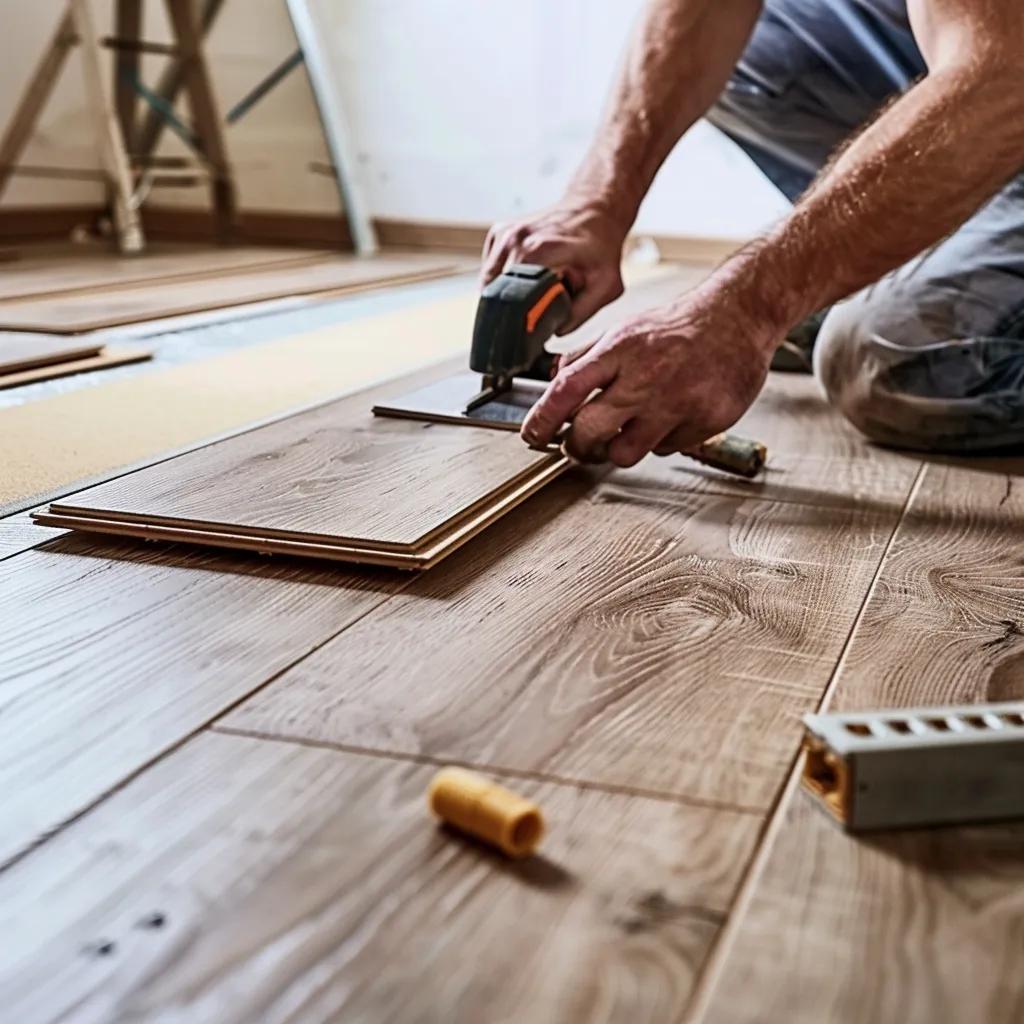
Balancing cost savings against workmanship risk guides the decision between DIY and hiring experts.
When Is DIY Installation Suitable for Laminate and Vinyl Flooring?
DIY fits straightforward click-lock laminate or vinyl plank in small to medium rooms.
Essential tools include tapping blocks, spacers, and a quality jigsaw.
DIY saves 30–50% on labor but may compromise warranty if improper techniques are used.
Why Is Professional Installation Recommended for Hardwood Flooring?
Hardwood installation demands precise moisture control, plank acclimation, and specialized nail-down or glue-down techniques.
Professionals ensure manufacturer warranty compliance and flawless finish, justifying higher labor rates through long-term performance.
What Are the Risks and Hidden Costs of DIY Flooring Installation?
Common DIY pitfalls include uneven subfloors, incorrect expansion gaps, and undercut mistakes, leading to plank buckling or squeaks.
Rework and wasted materials can offset initial savings and may require emergency professional intervention.
How Does Hardwood Floor Refinishing Cost Compare to Installing New Flooring?
Refinishing existing hardwood often delivers a refreshed appearance at a fraction of replacement cost.
What Is the Average Cost to Refinish Hardwood Floors in Marietta?
Hardwood refinishing costs range from $2 to $4 per square foot, covering sanding, stain application, and clear coats.
Average project for a 1,000 sq ft area falls between $2,000 and $4,000.
When Is Refinishing a Cost-Effective Alternative to Replacement?
Refinishing becomes ideal when plank damage is superficial, and subfloor integrity remains solid.
When hidden damage or water rot is minimal, refinishing yields over 20 years of renewed life versus $6–$18 per sq ft for new hardwood.
How Does Refinishing Affect the Longevity and Appearance of Hardwood Floors?
How Can Homeowners Choose the Right Flooring Based on Budget, Lifestyle, and Room Use?
Selecting the optimal floor involves aligning performance attributes with daily demands and design goals.
Which Flooring Is Best for High-Traffic and Pet-Friendly Homes?
What Flooring Options Are Suitable for Moisture-Prone Areas Like Basements and Bathrooms?
Are There Eco-Friendly Flooring Choices and How Do Their Costs Compare?
How Do Flooring Trends Influence Material Selection and Installation Costs?
How Do Flooring Trends Influence Material Selection and Installation Costs?
What Are the Most Common Questions Homeowners Have About Flooring Installation Costs?
Homeowners frequently wonder how material choice, labor, and project scope influence total investment. Understanding these concerns streamlines budgeting and planning.
Which Flooring Is Cheapest to Install: Hardwood, Laminate, or Vinyl?
How Much Does It Cost to Install Hardwood Floors per Square Foot?
Is Luxury Vinyl Plank Cheaper Than Hardwood Flooring?
What Factors Most Affect Flooring Installation Prices?
Can Flooring Installation Costs Be Reduced Without Sacrificing Quality?
A clear understanding of installation costs, performance attributes, and local considerations empowers homeowners to invest wisely. By comparing hardwood, laminate, and vinyl across material, labor, durability, and maintenance dimensions—and factoring in Marietta’s specific rates—each homeowner can select the flooring solution that best aligns with budget, lifestyle, and property goals.


